 |
 |
 |
| |
Serum and intrahepatic HBV markers and HBV-specific CD8 T cell responses after nucleos(t)ide analog therapy discontinuation in HBeAg-negative chronic hepatitis B patients
|
| |
| |
EASL 2020 virtual Aug 27-29
Mireia García-López1, Sabela Lens1, Laura J Pallett2, Barbara Testoni3, Zoe Mariño1, Sergio Rodriguez-Tajes1, Concepció Bartres1, Ester García-Pras1, Thais Leonel1, Elena Perpiñan1, Juanjo Lozano4, Francisco Rodríguez-Frías5, George Koutsoudakis1, Fabien Zoulim3, Mala Maini2, Xavier Forns1, Sofía Pérez-del-Pulgar1
1Liver Unit, Hospital Clínic, University of Barcelona, IDIBAPS, CIBERehd, Barcelona, Spain, 2Division of Infection and Immunity, Institute of Immunity and Transplantation, University College London, London, United Kingdom, 3Cancer Research Center of Lyon (CRCL), University of Lyon, UMR_S1052, UCBL, INSERM, U1052, Lyon, France, 4Bioinformatics Platform, CIBERehd, Barcelona, Spain, 5Liver Pathology Unit, Department of Biochemistry and Microbiology, Hospital Universitari Vall d'Hebron, Universitat Autònoma de Barcelona, CIBERehd, Barcelona, Spain
ABSTRACT
Background and aims: Previous studies have reported that up to 20% of patients with chronic hepatitis B (CHB) may achieve functional cure (HBsAg loss) after nucleos(t)ide analog (NA) treatment withdrawal. CD8 T cells play an important role in the immune control of HBV infection. The objective of this study was to analyze HBV-specific CD8 responses in parallel with peripheral and intrahepatic virological markers after NUC discontinuation in patients with HBeAg-negative (HBeAg-) CHB.
Method: Twenty-seven HBeAg- CHB patients with complete viral suppression (>3 years) and without cirrhosis were prospectively studied. A liver biopsy was taken at the time of treatment withdrawal (baseline). PBMC and serum samples were collected at baseline and various time-points during follow-up. Intrahepatic HBV-DNA (iHBV-DNA), covalently closed circular DNA (cccDNA) and serum HBV-DNA, HBsAg, core-related antigen (HBcrAg) and pregenomic RNA (pgRNA) levels were determined. HBV-specific T cell responses (IFNy, TNF and CD107a) were analyzed by multiparametric flow cytometry after in vitro expansion in the presence of overlapping peptides (OLP) spanning core, envelope and polymerase.
Results: After a median follow-up of 34 months (IQR 26-37), 22 (81%) patients remain off-therapy, with 8 (30% of the total cohort) losing HBsAg; whilst 5 (19%) required NA reintroduction due to relapse. Although all patients were iHBV-DNA and cccDNA positive at baseline, only 41% and 48% had detectable serum pgRNA and HBcrAg, respectively. Baseline HBsAg levels correlated significantly with iHBV-DNA (r = 0.7, p < 0.0001) and both markers were lower in patients who lost HBsAg (p < 0.001). Baseline intrahepatic (iHBV-DNA, cccDNA) or serum (HBsAg, HBcrAg or pgRNA) viral markers did not show any association with peripheral CD8 T cell responses. Importantly, degranulating CD8 T cells (CD107a+) or those co-producing IFNy and TNF in response to stimulation with core OLP were significantly higher (p = 0.05 and p = 0.039, respectively) at baseline in patients remaining off-therapy compared to those requiring NA reintroduction. Interestingly, the enhanced frequency of CD8 T cells co-producing IFNy and TNF persisted up to 1 year of follow-up (p = 0.009). Notably, CD8 T cell responses to polymerase or envelope failed to associate with outcome as robustly as those against core.
Conclusion: NA discontinuation is feasible in a high proportion of HBeAg- patients, particularly in those with low HBsAg levels. Higher frequencies of CD8 T cells with cytotoxic and non-cytolytic anti-HBV (core) reactivity are detectable at baseline in those patients who maintain viral control after therapy withdrawal. These data support HBsAg levels and HBV-specific CD8 T cell frequencies as correlates of HBV control off-therapy, requiring validation in larger studies.
from Viral Hepatitis Wrap-Up by
Geoffrey Dusheiko
Kings College Hospital
Emeritus Professor of Medicine
University College London Medical School
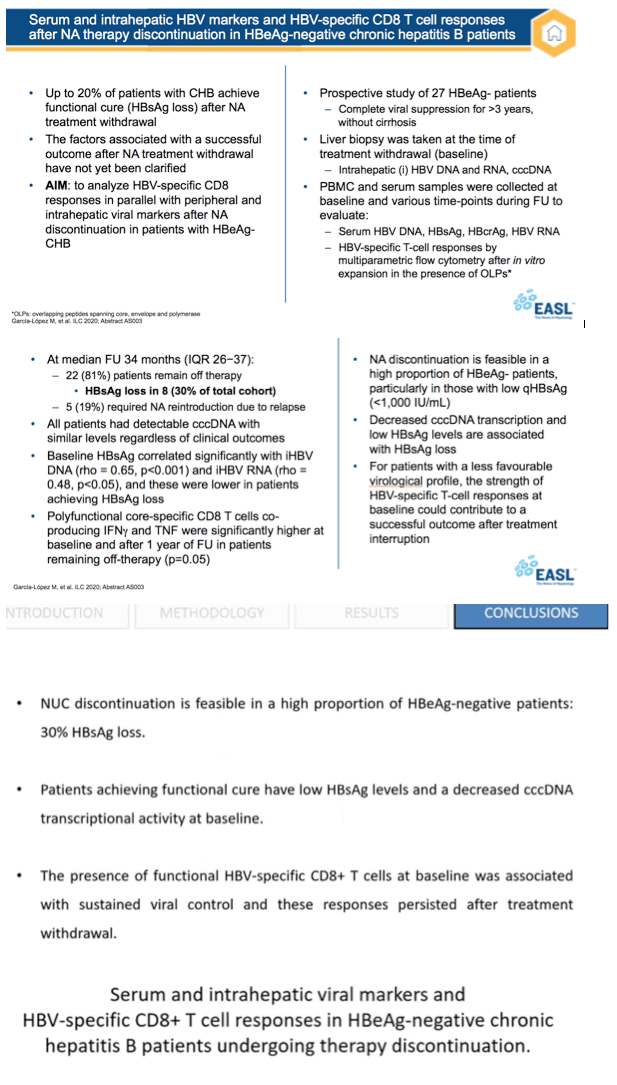
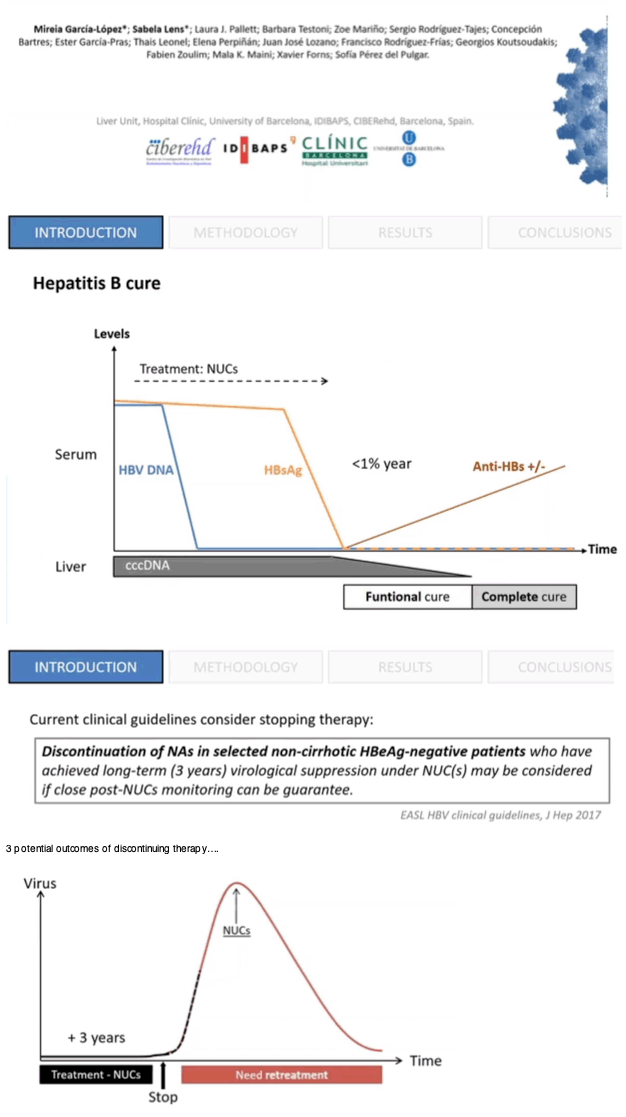
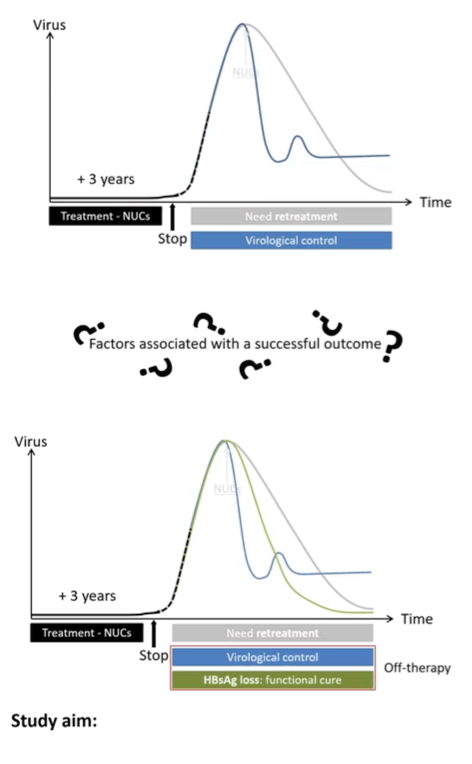
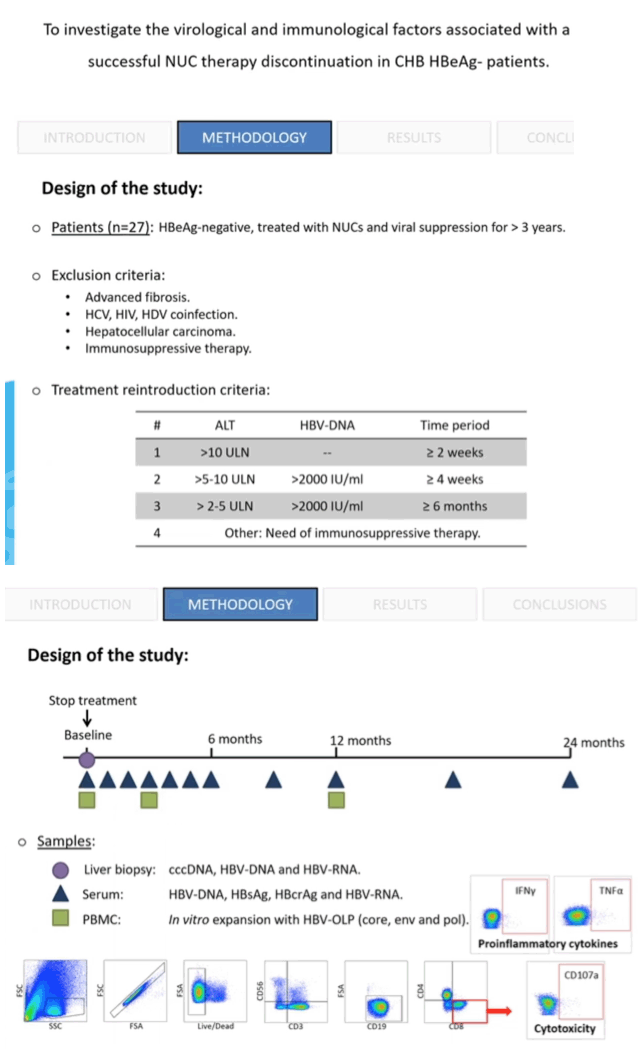
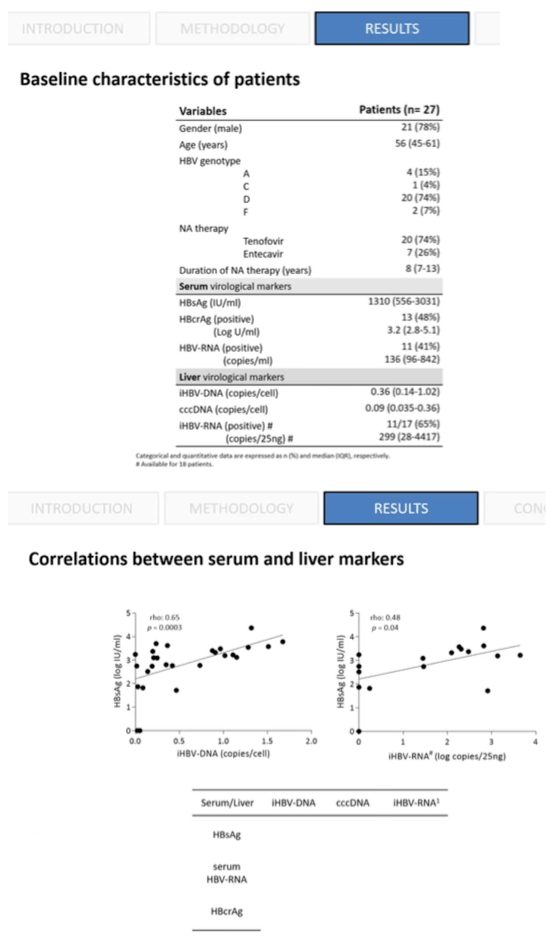
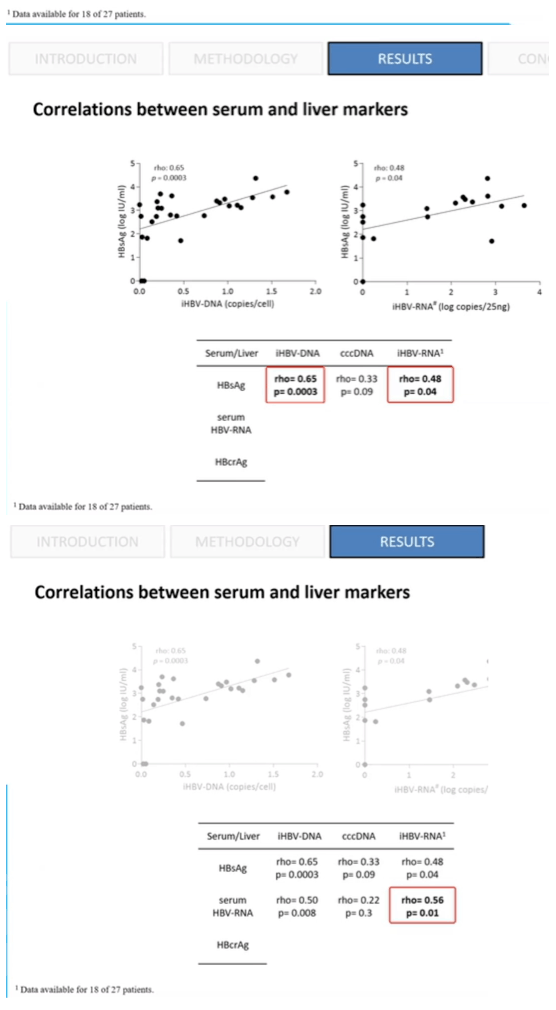
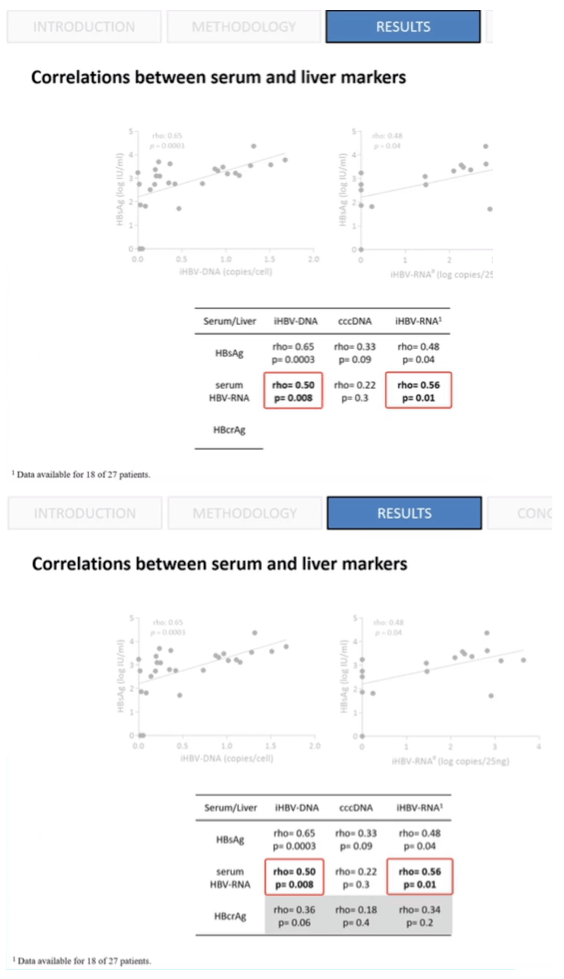
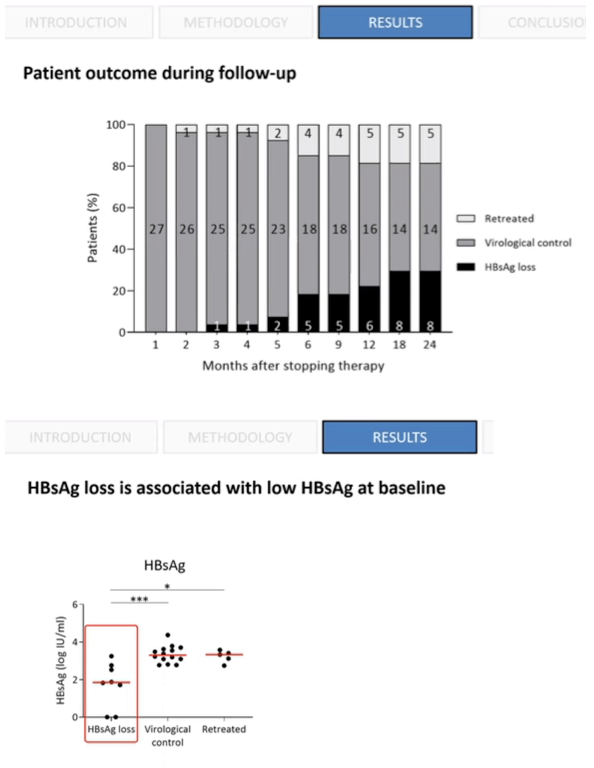
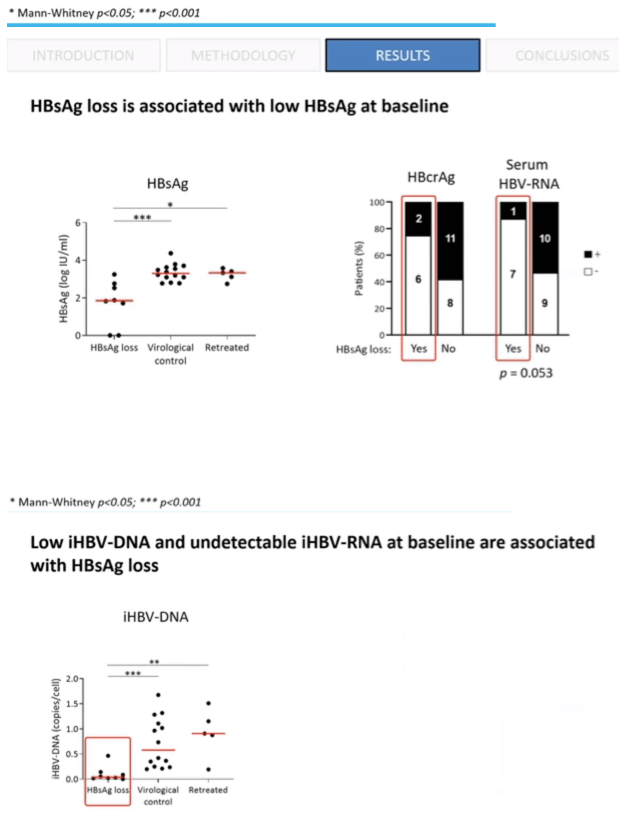

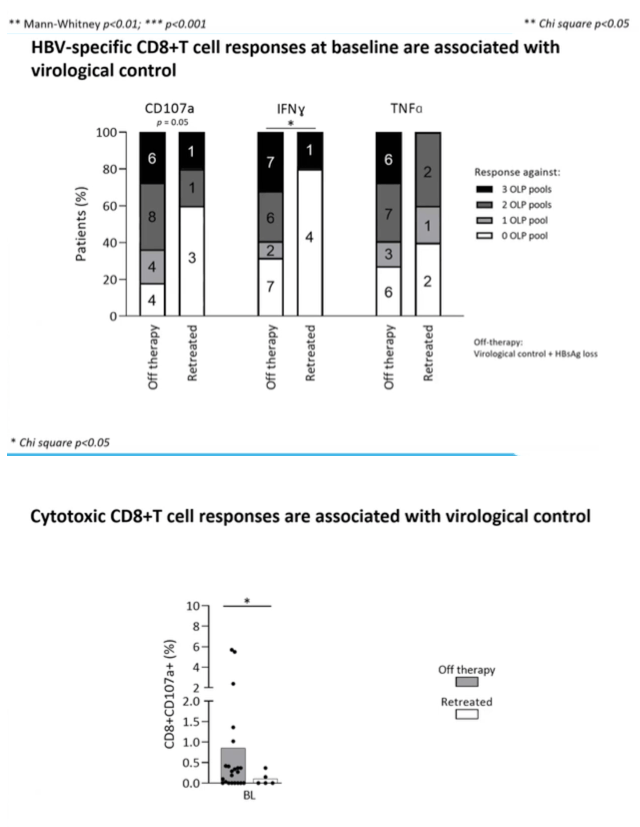
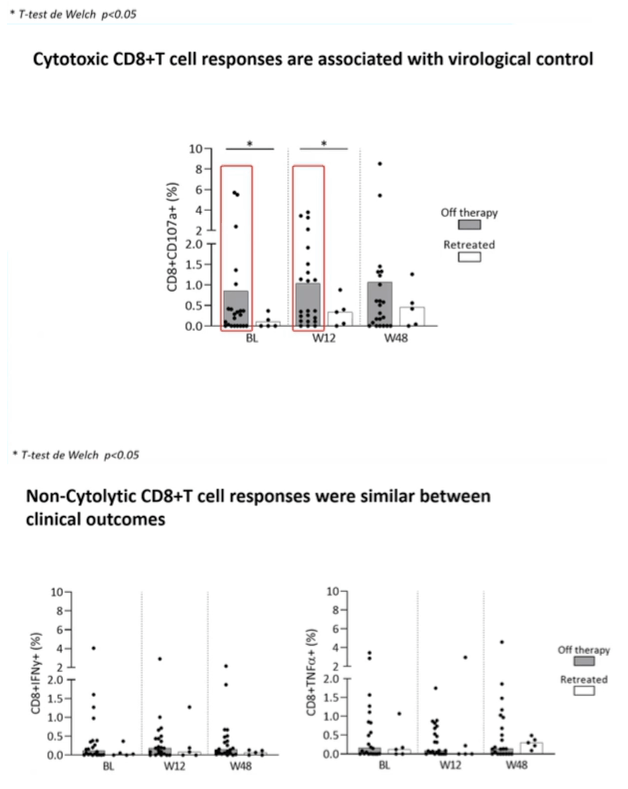
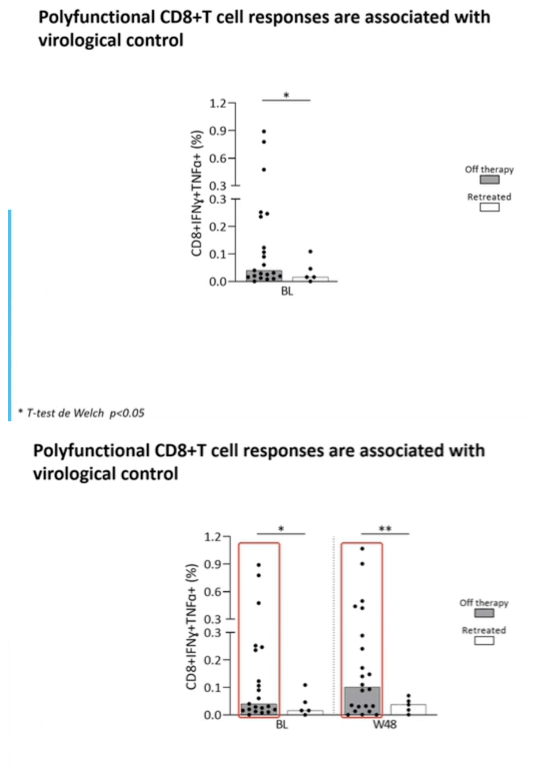
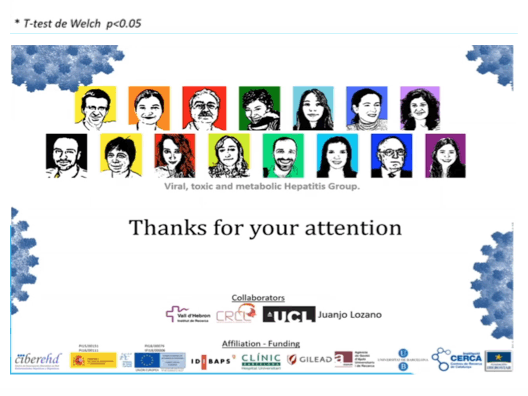
|
| |
|
 |
 |
|
|